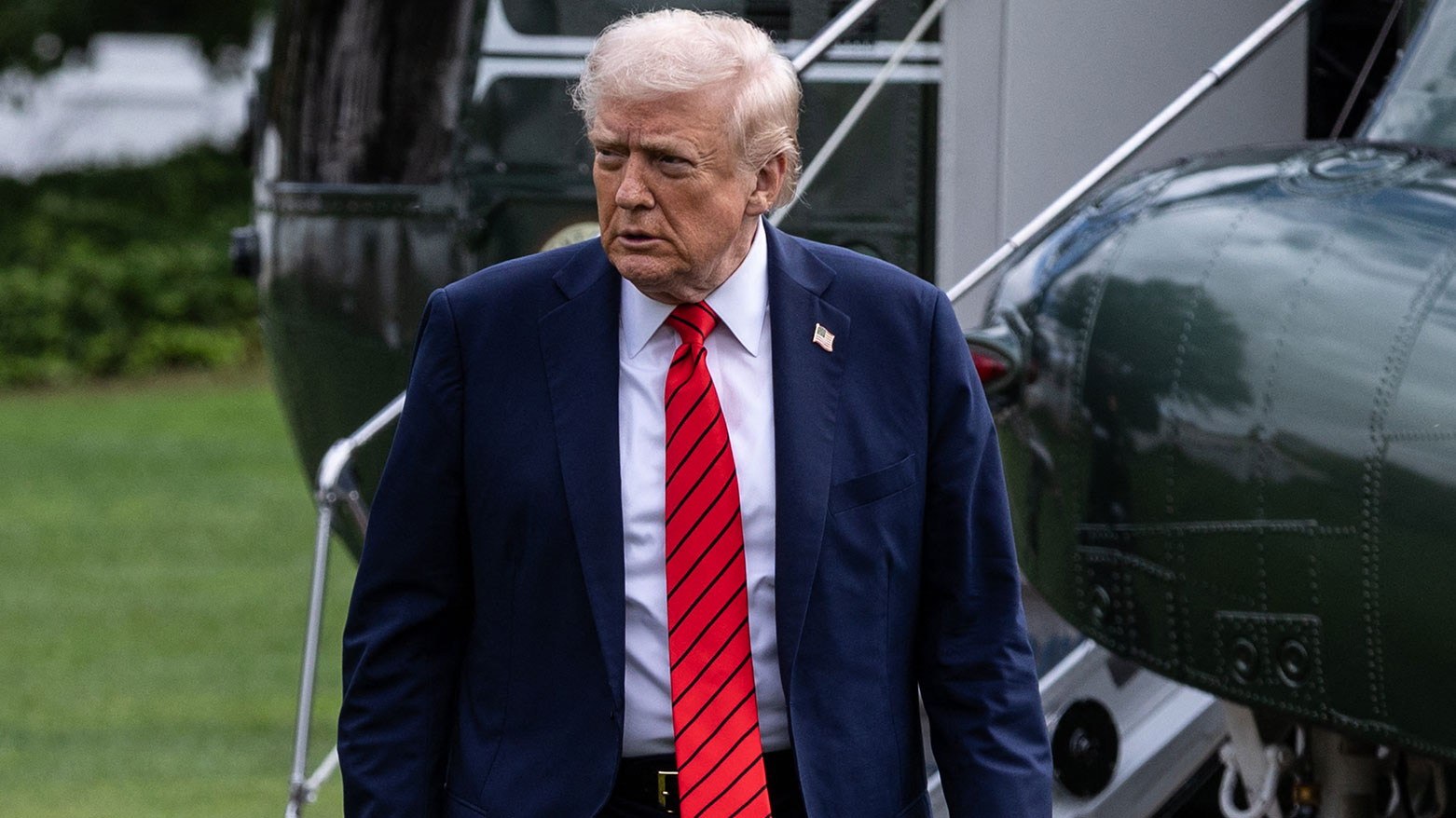Trump Imposes 100 Percent Tariff on China, Threatens to Scrap Xi Meeting
Trump announced a 100% tariff on all Chinese imports and new U.S. export controls starting Nov. 1, citing Beijing’s “aggressive” trade actions. The move shook markets, strained U.S.-China ties, and cast doubt on his planned meeting with Xi at APEC amid rising global trade tensions.

ERBIL (Kurdistan24) – U.S. President Donald Trump on Friday announced a sweeping 100 percent tariff on all Chinese imports, alongside new export controls on critical American software, in response to what he described as Beijing’s “extraordinarily aggressive” actions on trade and exports. The decision, set to take effect on November 1, has sent shockwaves through global markets and reignited tensions between the world’s two largest economies.
In a fiery post shared on Truth Social, Trump revealed that China had sent “an extremely hostile letter to the World,” declaring that, beginning November 1, Beijing would impose large-scale export controls on virtually every product it makes — and even some it doesn’t — affecting all countries without exception.
“It has just been learned that China has taken an extraordinarily aggressive position on Trade,” Trump wrote. “This affects ALL countries, without exception, and was obviously a plan devised by them years ago. It is absolutely unheard of in International Trade, and a moral disgrace in dealing with other Nations.”
Trump added that, in retaliation, “starting November 1, 2025, the United States of America will impose a Tariff of 100% on China, over and above any Tariff that they are currently paying. Also on November 1, we will impose Export Controls on any and all critical software.”
He closed his statement with a characteristic flourish: “It is impossible to believe that China would have taken such an action, but they have, and the rest is History. Thank you for your attention to this matter! DONALD J. TRUMP, PRESIDENT OF THE UNITED STATES OF AMERICA.”
The announcement triggered an immediate market downturn, with the Nasdaq Composite Index falling 3.6 percent and the S&P 500 dropping 2.7 percent, as investors reacted to renewed fears of a full-blown trade war.
Trump’s administration had previously maintained a 30 percent tariff on Chinese goods, imposed during his earlier trade confrontations with Beijing, citing alleged unfair practices and China’s role in the fentanyl trade. Beijing currently imposes retaliatory tariffs of around 10 percent.
Hours before the official declaration, Trump had hinted at the move in a lengthy Truth Social post, warning that China’s planned export restrictions on rare earth minerals—materials crucial to the production of smartphones, electric vehicles, renewable energy systems, and advanced military technology—posed a global threat.
“There is no way that China should be allowed to hold the World ‘captive,’” he wrote, accusing Beijing of pursuing a “very hostile” stance.
The U.S. president’s sudden escalation also casts uncertainty over his planned meeting with Chinese President Xi Jinping at the Asia-Pacific Economic Cooperation (APEC) summit later this month in South Korea. It was expected to be the first encounter between the two leaders since Trump’s return to office in January.
“I was to meet President Xi in two weeks, at APEC, in South Korea, but now there seems to be no reason to do so,” Trump wrote online. However, when later questioned by reporters in the Oval Office, he appeared to leave the door open: “I haven’t canceled, but I don’t know that we’re going to have it. But I’m going to be there regardless, so I would assume we might have it.”
Trump told reporters that he was baffled by China’s timing, saying, “Some very strange things are happening in China! They are becoming very hostile.” He added that other countries had contacted Washington expressing anger over Beijing’s “great Trade hostility, which came out of nowhere.”
He accused China of “lying in wait” despite six months of what he characterized as “good relations,” a period that had seen progress in bringing TikTok’s U.S. operations under American control as required by a law passed by Congress last year.
The latest move marks a return to the tit-for-tat tariff battles that defined earlier phases of U.S.-China relations during Trump’s previous term, which had threatened to paralyze trade flows between the two economic giants. While both sides had agreed to de-escalate tensions, the truce remained fragile.
Just last week, Trump had signaled a more cooperative tone, saying he intended to press Xi on increasing U.S. soybean purchases—a priority issue for American farmers who continue to feel the economic strain from trade restrictions.
Earlier Friday, Beijing announced its own retaliatory measure, declaring that it would impose “special port fees” on ships operated by or built in the United States, following Washington’s earlier move in April to impose similar charges on Chinese-linked vessels.
Meanwhile, the U.S. Federal Communications Commission (FCC) announced that it had successfully pushed for the removal of millions of banned Chinese items from major online commerce platforms.
“The Communist Party of China is engaged in a multi-prong effort to insert insecure devices into Americans’ homes and businesses,” FCC Commissioner Brendan Carr said in a statement on X, formerly Twitter.
At the heart of the escalating confrontation lies the issue of rare earth elements, vital to the modern economy and global defense systems. China remains the dominant global supplier, accounting for nearly 70 percent of production and refining capacity. Any restriction on these exports threatens to disrupt international manufacturing and energy sectors.
Trump’s decision to double tariffs and enforce export controls marks a dramatic reassertion of U.S. economic nationalism, potentially reshaping global trade structures ahead of the upcoming APEC summit.
As both Washington and Beijing brace for renewed confrontation, the world’s markets, industries, and diplomatic circles now await whether Trump’s escalation will push the U.S.-China rivalry into a new era of trade and geopolitical turbulence.
